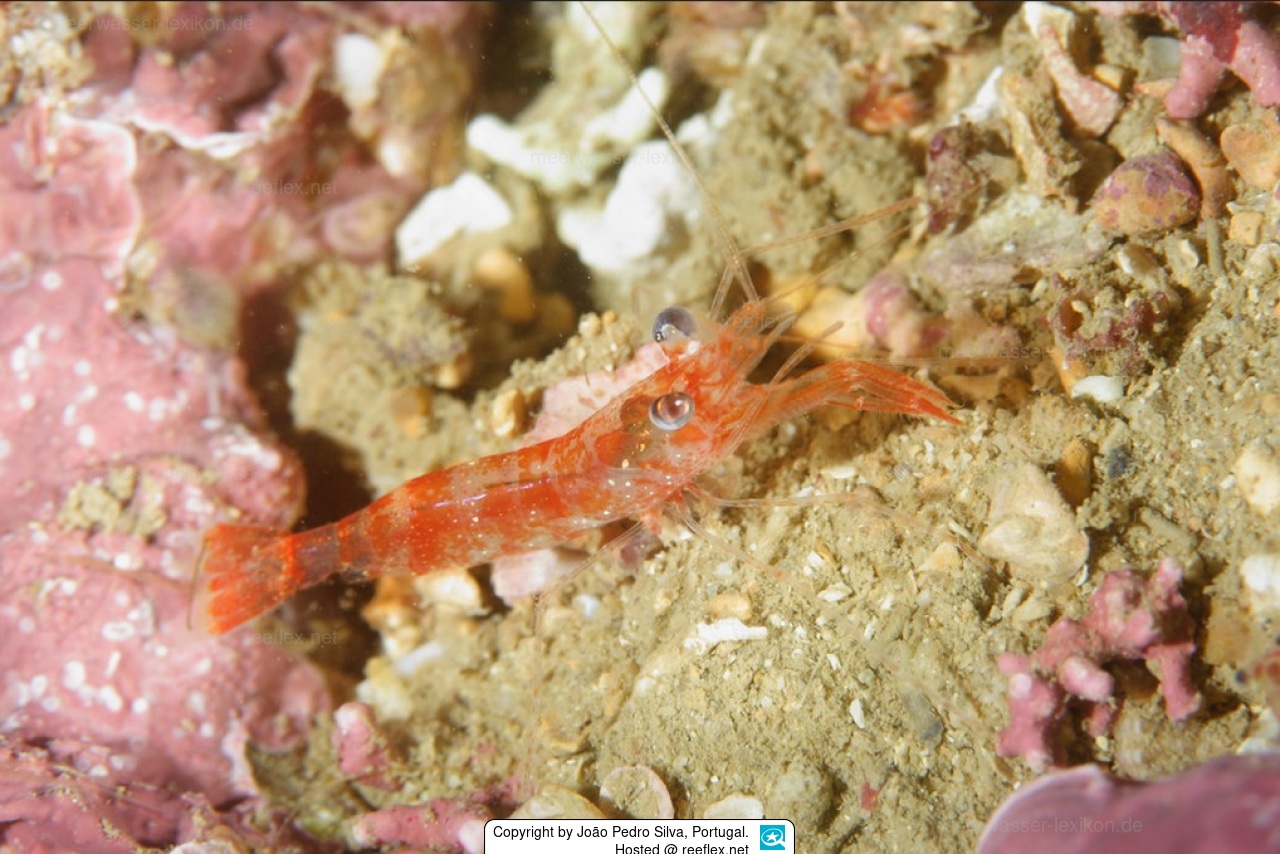Info
Processa macrophthalma inhabits the edges of Posidonia meadows and sandy areas in the Mediterranean, the shrimp does not tolerate brackish water and is therefore not found in lagoons.
During the day this species is buried in the sand, at night it seeks its prey between the tufts of Neptune grass and on nearby sedimentary areas.
During the day, the shrimp's colour is white-transparent, sometimes pink, with white chromatophores that are evenly distributed, except for the root of the tail fan, which is much whiter. At night the shrimp have a pinkish-red colour, especially the females, and shortly after moulting, males are almost transparent.
The first pair of legs of Processa macrophthalma is asymmetrical: the right one ends in a claw and the left one in a claw.
The second pair of legs has a claw on each side, but the legs are unevenly long. The other pairs are symmetrical and without claws.
The eyes are significantly larger than those of other shrimp.
We are not aware of any postural experiences so far, although the shrimp should be well preserved.
We would like to thank João Pedro Silva from Portugal for his great photos.
During the day this species is buried in the sand, at night it seeks its prey between the tufts of Neptune grass and on nearby sedimentary areas.
During the day, the shrimp's colour is white-transparent, sometimes pink, with white chromatophores that are evenly distributed, except for the root of the tail fan, which is much whiter. At night the shrimp have a pinkish-red colour, especially the females, and shortly after moulting, males are almost transparent.
The first pair of legs of Processa macrophthalma is asymmetrical: the right one ends in a claw and the left one in a claw.
The second pair of legs has a claw on each side, but the legs are unevenly long. The other pairs are symmetrical and without claws.
The eyes are significantly larger than those of other shrimp.
We are not aware of any postural experiences so far, although the shrimp should be well preserved.
We would like to thank João Pedro Silva from Portugal for his great photos.







 João Pedro Silva, Portugal
João Pedro Silva, Portugal






